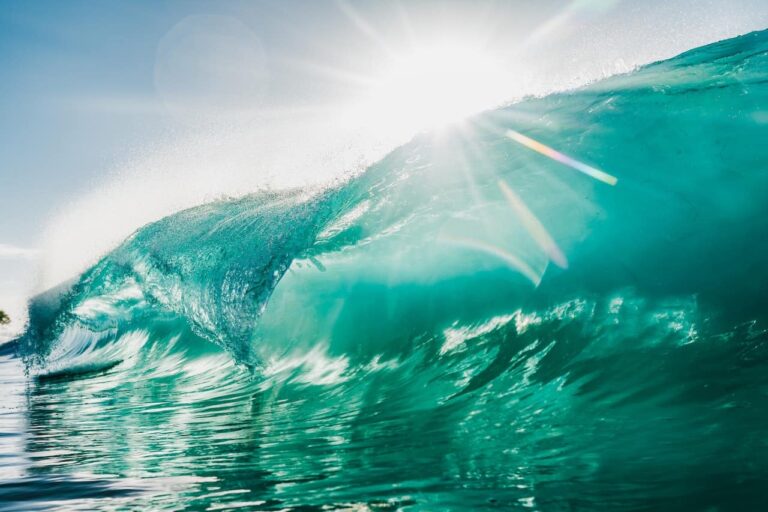The Western Indian Ocean (WIO) and Africa are the driving forces behind The Great Blue Wall, a path for achieving a world that values nature by the year 2030.
The ambitious and groundbreaking Great Blue Wall Project aims to safeguard and conserve the waters of the planet. The urgent problems of pollution, overfishing, habitat destruction, and climate change are being addressed through international cooperation.
The establishment of a wide network of marine protected areas (MPAs) along various nations’ coastlines, particularly in Africa and the Americas, is the goal of the Great Blue Wall Initiative. The Great Blue Wall is modeled after the Great Green Wall in Africa, which works to stop desertification.
Its objectives are to protect marine biodiversity, strengthen coastal stability, and encourage sustainable fishing.
Table of Contents
The need for global collaboration
The Great Blue Wall Project was started as a global effort to protect the oceans in response to these urgent issues. It underlines the necessity of international cooperation because no one country can resolve these difficulties on its own. The project promotes international cooperation, knowledge exchange, and resource sharing in order to safeguard marine habitats.
For the survival of our planet and all living forms that depend on it, the health of our oceans is essential. However, human activities have had a negative impact on marine ecosystems recently. Fish populations have decreased due to overfishing, which has caused food chain instabilities. Coral reefs and marine life have suffered significant harm as a result of pollution from plastic trash and industrial effluent. Rising sea levels, acidity, and warming seas as a result of climate change pose an additional threat to marine biodiversity.
The objectives of the Great Blue Wall project
The Great Blue Wall Project has set forth several key objectives to achieve its mission. Firstly, it aims to establish a network of marine protected areas (MPAs) that span across international borders. These MPAs act as sanctuaries for marine life, safeguarding critical habitats and promoting biodiversity. By connecting these protected areas, migratory species can navigate safely across vast distances, ensuring their survival.
Secondly, the project focuses on sustainable fisheries management. Overfishing is a major threat to marine ecosystems, and the Great Blue Wall aims to implement responsible fishing practices, such as limiting catch sizes, enforcing fishing seasons, and promoting the use of sustainable fishing gear. By adopting these measures, fish populations can recover, and the balance of marine ecosystems can be restored.
The project also seeks to combat marine pollution through innovative waste management strategies. It encourages the reduction of single-use plastics, promotes recycling and waste treatment, and advocates for stricter regulations on industrial waste disposal.
These efforts aim to mitigate the harmful impact of pollution on marine life and preserve the beauty and health of our oceans.
Implementing the Great Blue Wall initiative
Implementing the Great Blue Wall Initiative requires collaboration between governments, local communities, NGOs, and international organizations. Key steps include:
a. Identifying priority areas
The participating countries conduct scientific assessments to identify ecologically important areas that require protection. These assessments consider factors such as biodiversity, vulnerability, and the presence of unique ecosystems.
b. Establishing marine protected areas
Based on the assessments, the countries create a network of MPAs, designating specific zones for different purposes, such as no-take areas, sustainable fishing zones, and areas for research and monitoring.
c. Stakeholder engagement
Involving local communities, fishermen, and other stakeholders is crucial for the success of the initiative. Their knowledge and participation help in designing effective management strategies and ensure the sustainable use of resources.
d. Enforcement and monitoring
Adequate enforcement mechanisms and regular monitoring are essential to ensure compliance with regulations and to track the effectiveness of the MPAs. This involves employing technology, such as satellite surveillance and underwater drones, to monitor and protect the protected areas.
Read also: Blue Economy: what is it and what are its main components and principles
Impact and future outlook of the Great Blue Wall project
The Great Blue Wall Project has the potential to bring about significant positive change. By uniting nations and fostering collaboration, it creates a platform for sharing scientific research, technological advancements, and best practices in ocean conservation. This collective knowledge can accelerate progress in understanding and addressing the challenges faced by marine ecosystems.
Furthermore, the establishment of a vast network of marine protected areas will provide refuge for countless species and help restore marine biodiversity. The connectivity between these areas will allow for the free movement of migratory species, contributing to their survival and the overall resilience of marine ecosystems.
The sustainable fisheries management practices promoted by the project will not only replenish fish stocks but also support the livelihoods of communities dependent on fishing. By ensuring the long-term sustainability of fish populations, the project aims to create a balance between human needs and the health of marine environments.
Read also: World Water Day 2023, UN warns: unsustainable use, risk of global water crisis












